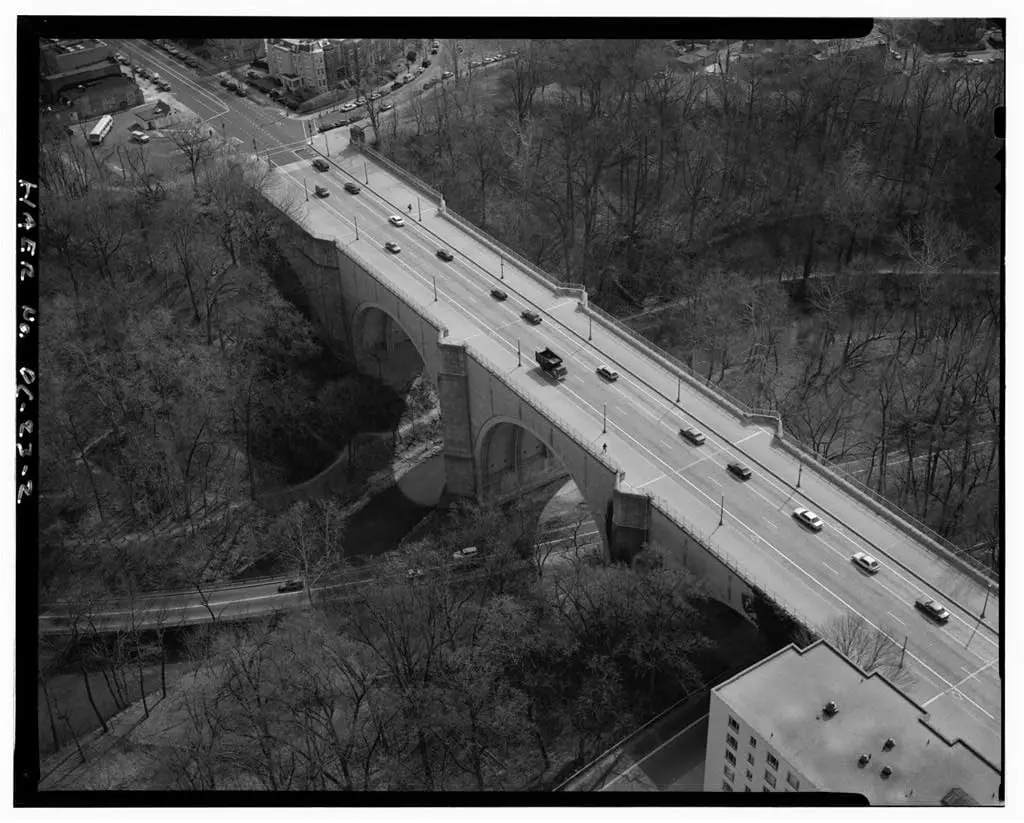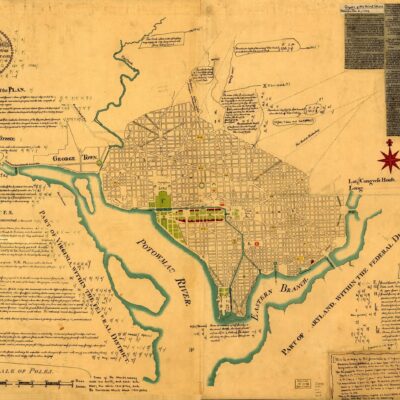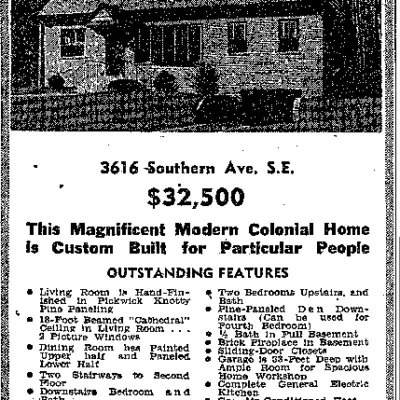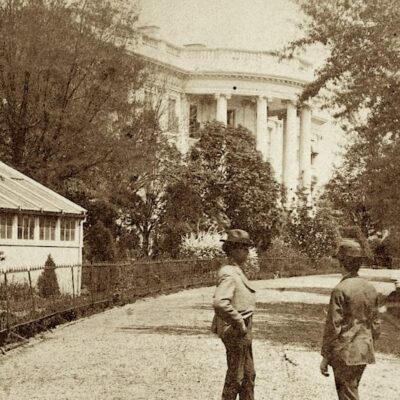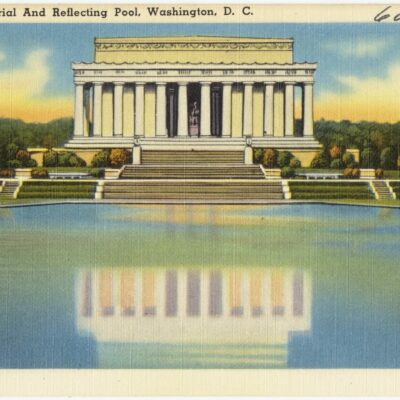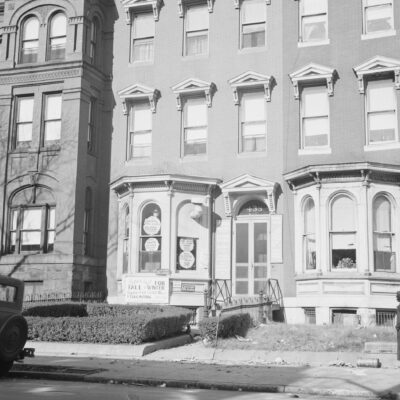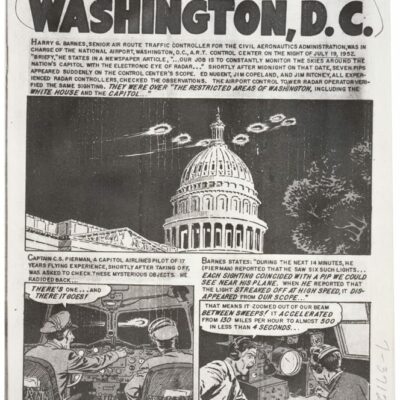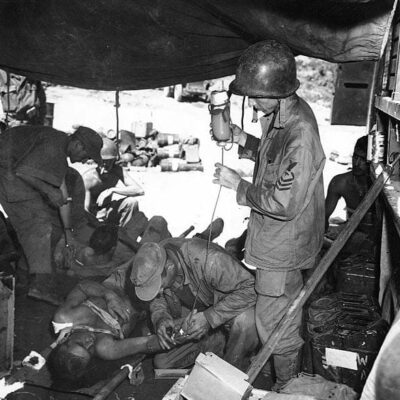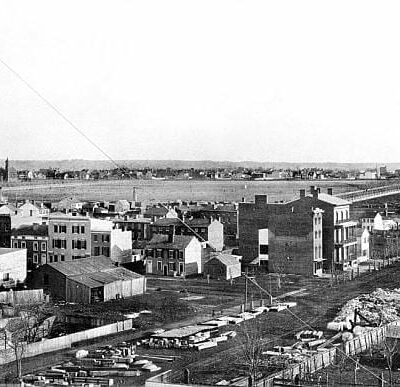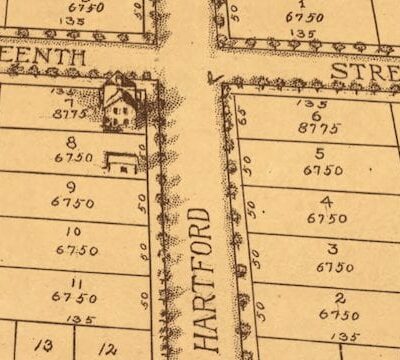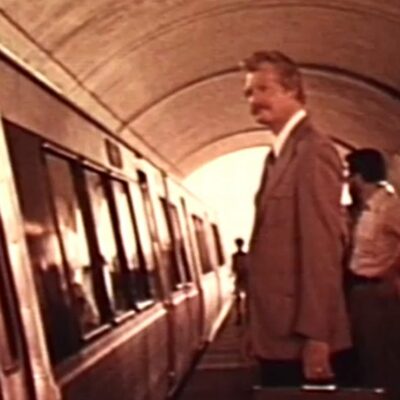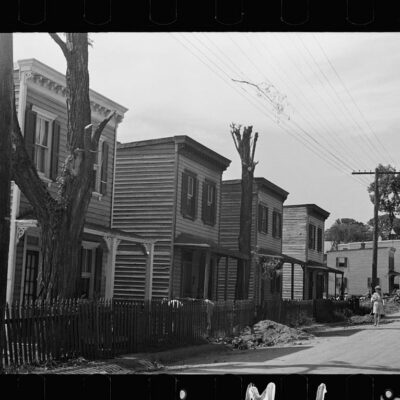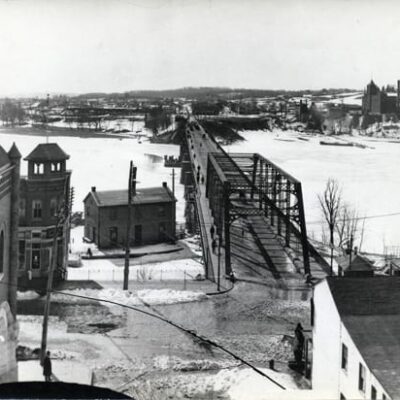
Ghost Dog went on another walk this past weekend to seek out three more stories for the GoDC community. This time, she passed through Adams Morgan, en route to the Duke Ellington Bridge (formerly known as the Calvert Street Bridge). It was named in honor of Washington’s native son in 1974, after Ellington’s death.
Construction on the bridge began in 1933 to replace the original 1891 streetcar bridge built by the Rock Creek Railway. That old bridge was a steel trestle bridge with a wooden roadway … and most likely a scary experience, riding 750 feet across over 100 feet over Rock Creek.
What’s really amazing is the old bridge was moved 80 feet south to be kept in service while the new bridge was being built. And, the bridge was successfully moved in 48 hours!
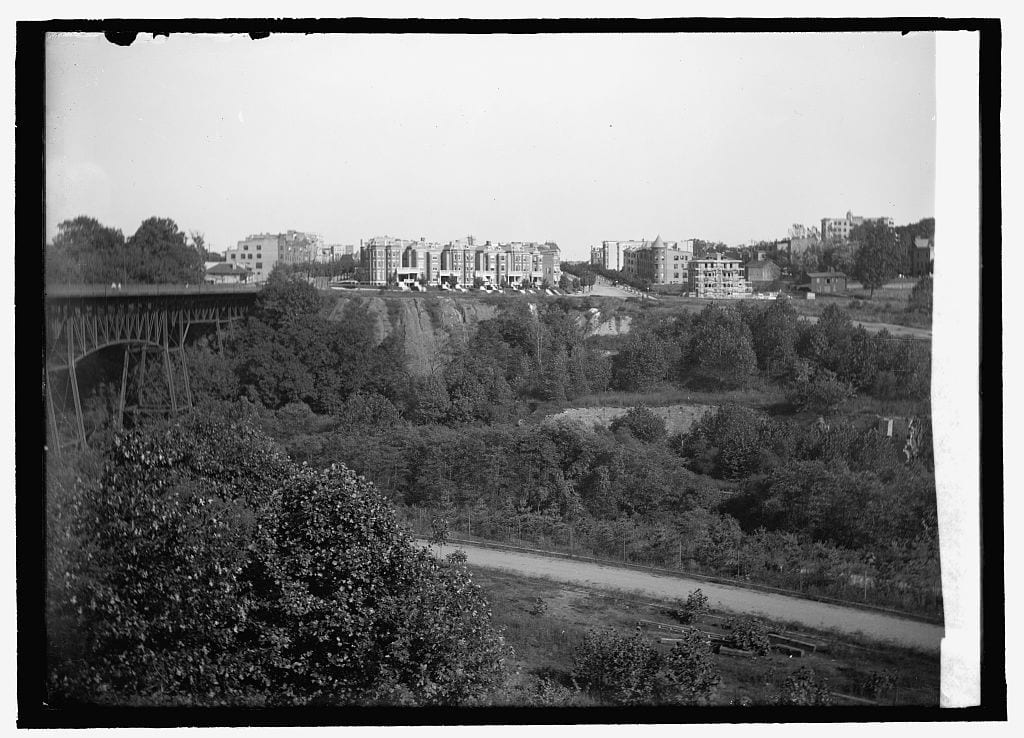
Ghost Dog had no problem walking over the current bridge and she (BTW, Ghost Dog is a girl) scouted out some stories. These are the three she came up with.
1. Opening day after $1,175,000: December 19th, 1935
The opening of the bridge in the evening of December 19th, 1935, was a grand affair, attending by over 30,000 people. Below is the Washington Post piece detailing the formal dedication of the bridge.
In and above the valley of Rock Creek, where violet and green and red spotlights played upon the three limestone-faced arches, 30,000 Washingtonians and a United States Senator from Oklahoma last night formally opened the new $1,175,000 Calvert Street Bridge.
Actually, half of it had been open to traffic since October 14.
Two little girls–Geraldine Clark, 4, daughter of the Assistant Engineer Commissioner, serious and soulfully brunette and tinier, smiling Ann Laser, 6, with a big blue ribbon in her tumbled yellow curls–snipped the white tape that let traffic through for the first time along both lanes.
Then the parade swung across–big black limousines, carrying Commissioners Melvin C. Hazen and Dan I. Sultan and Board o Trade and citizens’ leaders.
Off to Connecticut avenue, the parade blared; then up to Woodley road; and so to Cathedral avenue and down into the valley of Rock Creek.
The reviewing stand was halfway down the valley, and half the parade never got there–three sections, the labor, commercial, and American Legion groups, were disbanded on Woodley road to save reviewing time so that the reviewers might go on father down the valley to speakers’ stand in time for the radio program.
All told, the full parade had 1,413 participants, in 106 automobiles and five floats; it had 10 bands; and it took 35 minutes to pass Eighteenth street and Kalorama road.
…
Commissioner Sultan said:
“It is a monument to the engineering profession, a thing of beauty that should serve for many years to come–I hope for a century.”
Commissioner Hazen said:
“It is a magnificent Christmas gift to the City of Washington.”
Senator Elmer Thomas, of Oklahoma, who guides District appropriations through the upper House, said:
“This is the bridge that gasoline built. It was paid for out of gasoline taxes, most of it, not all of them paid by residents of the District. Pennies for this bridge came from residents of Virginia and Maryland, even of foreign countries. This is one of the wonders of Washington.”
I love that label. One of the wonders of Washington.
There is also another interesting Oklahoma connection in Woodley Park. The Oklahoma State Society used to occupy the Greenberg House at 2301 Calvert St. (currently occupied by Syracuse University’s D.C. program).
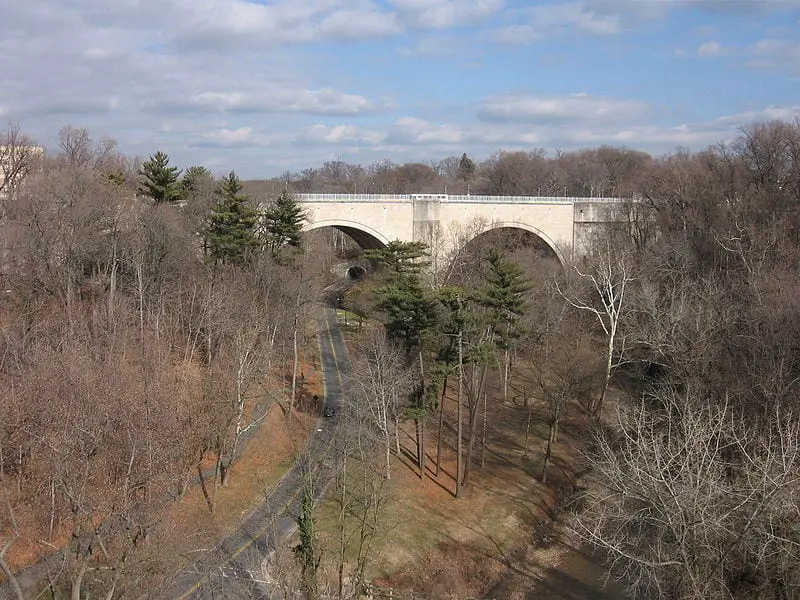
2. Girl survives 100-foot fall plunge
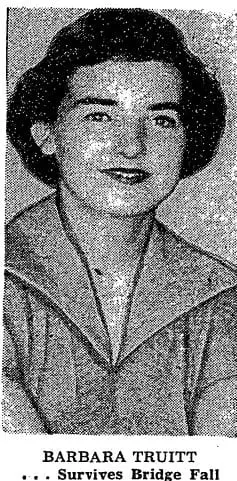
Yes, the story is as crazy as it sounds. Below is an article we came across in the Washington Post from May 26, 1953
An attractive, 19-year-old radio station clerk survived a 100-foot plunge from the Calvert st. bridge yesterday afternoon.
The girl, Barbara Truitt, of 3025 15th st. nw., vaulted over a railing in the middle of the bridge about 1:15 p. m., a witness told police. Physicians said she will live.
Police said when they found her under the bridge, she was moaning: “Let me die. Why didn’t I die. Put me out of my pain.”
Eighth Precinct Pvts. Kenneth E. Tippet and George Meikle, who arrived shortly after the plunge, said the girl’s fall was broken by a thick cluster of tree limbs.
Taken to Emergency Hospital, she was reported to be in “fairly good” condition, though suffering from fractures of all limbs, including a compound fracture of the left left, and possible back injuries. She later was transferred to Gallinger Hospital.
…
Employed at WTOP since last August, Miss Truitt moved to her 15th st. apartment a month ago.
3. Compromise on aesthetics to save lives
Sadly the Duke Ellington Bridge, like all bridges, was a prime location for suicides. The newspaper archives are full of tragic stories of depression and death. In one 10-day span in the 1980s, there were three deaths. Between 1978 and 1985, there were 40.
It was a horrible, growing trend that needed to be addressed. Unfortunately, for some, it meant compromising the aesthetic beauty of this grand triumph of engineering.
Construction on a fence began in 1985, but it was halted midway through completion due to loud protests by Ward 1 residents.
By December of that year, Mayor Marion Barry stepped in to announce that the fence would be completed to prevent any further suicides. Below is the article from the Washington Post, published on December 19th, 1985.
Mayor Marion Barry said yesterday that the city will finish construction of an eight-foot suicide barrier along the Calvert Street bridge that was halted after strong opposition from neighborhood groups and preservationists.
“Life is more important than esthetics,” Barry said.
In the last eight years, 37 persons have jumped off the bridge, known officially as the Duke Ellington Bridge. and a nearby span on Connecticut Avenue.
Opposition to the fence has come from City Council member Frank Smith (D-Ward 1), neighborhood groups and preservationists who have argued that such a barrier would be unsightly and would not stop those determined to jump from the Ellington bridge, the landmark arch over Rock Creek where most of the suicides have occurred.
James Morrison of the Kalorama Citizens Association said his group opposes Barry’s decision.
The mayor said that the fence would be erected on a trial basis and that its effectiveness would be reviewed in one year. A spokesman for the mayor said he believe the fence would be completed only along the Calvert Street bridge and not the Connecticut Avenue span.
